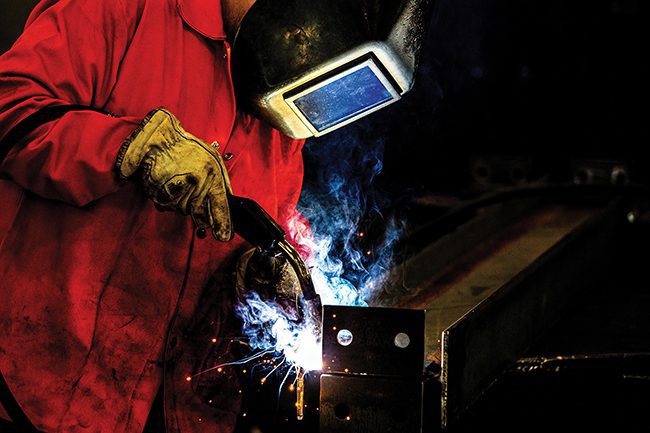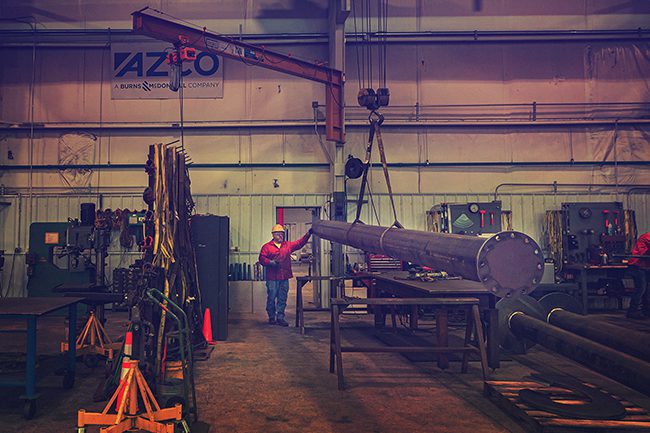How to Complete Successful Power Projects Working with EPC Contractors

Power companies rely heavily on engineering, procurement, and construction (EPC) contractors to build new power facilities and keep old ones in top condition. However, some projects go smoother than others. Here are some tips for completing a successful project.
Given the multitude of changes in the power industry, including grid hardening, renewable energy resource integration, and new load center additions, many power companies are under unprecedented pressure to improve and expand their power systems. Industry demands are driving capital buildouts that many power companies are not staffed to deliver internally. That's why engineering, procurement, and construction (EPC) contractors are so vital to the industry. EPC firms do these types of jobs every day, and they often have multiple projects in progress at any given time. They are the experts and have the experience to start jobs off right and keep them on track for on-time and on-budget delivery.
EPC contracts are convenient for power companies because the arrangement places the responsibility for jobs on a single provider. You've probably heard of turnkey projects," meaning the EPC contractor hands the owner a proverbial set of keys" at the end of the job, giving them a completely tested, fully functioning facility, ready to begin commercial operation.
There are a lot of factors that affect the success of EPC projects. A hiccup in one area, such as late delivery of a critical piece of equipment, can cause ripple effects throughout the job. Therefore, EPC contractors and owners must stay on top of things to ensure projects are completed on schedule.
Keeping All Stakeholders on the Same PageGood communication is vital to successful projects. The most important thing is to define the communication matrix, persons, and responsibilities when a project starts," Martin Dittrich, Bilfinger Tebodin's business development director for Engineering and Maintenance in Europe, told POWER. Bilfinger is a global industrial services provider that offers professional project and construction management services for the power industry and others.
Matt Kram, an EPC project manager with Burns & McDonnell, a Kansas City, Missouri-headquartered firm that plans, designs, permits, constructs, and manages projects worldwide, agreed that effective communication is needed from the beginning. Everything starts on day one of the job-and day one can mean a lot of different things," Kram told POWER.
For example, day one for the EPC contractor could be when its team begins preparing to bid for a project. Communication is important in that phase to ensure the work group has a synced-up proposal" that meets a client's expectations, Kram said.
Another day one is when the actual job kicks off. That's when it's important to have all stakeholders at the table. This includes people from engineering, procurement, fabrication [Figure 1], construction, startup, and commissioning. It also includes folks from the original equipment manufacturers that are supplying the major equipment for the project. You've got to start the job off with the end in mind. What is the product we're trying to leave our client?" Kram asked. It's important to have everybody's buy-in and feedback all along the way, but really, getting everybody engaged day one is essential."
 |
1. Engineering, procurement, and construction (EPC) contractors often offer unique capabilities. For example, AZCO, a wholly owned subsidiary of Burns & McDonnell, has more than 83,000 square feet of advanced, automated shop space and the ability to deliver prefabricated metal components anywhere. This has made construction sites safer while delivering higher quality, better cost control, and the ability to more easily manage critical path scheduling. Courtesy: Burns & McDonnell |
Laszlo von Lazar, president of global operations with Black & Veatch, an engineering, procurement, consulting, and construction company based in Overland Park, Kansas, said it's important for communication between the owner and EPC contractor to be zippered up," that is, effective at all levels-senior executive level, management level, and field level. He suggested that having well-established connections throughout the organizations makes it easier to talk through problems and come up with solutions.
Learning to Love MeetingsSome people think meetings are a waste of time, but when it comes to running a successful EPC project, well-executed meetings are essential. Regular meetings with the customer and the vendor are a must, where smart objectives and tasks should be articulated to make sure all deliverables are achieved," said Steve Hill, strategic business development director for Energy and Utilities, and Key Account Management with Bilfinger UK.
Black & Veatch's von Lazar said most owners realize how important meetings are to the success of a project. He said one of his top clients faithfully respected meeting times and it led to great success. If the customer knew I, as the project manager, was in my POD-plan of the day-meeting or was in the schedule meeting, that was sacrosanct. It was never impeded upon. We would talk after that," von Lazar recalled.
For meetings to be truly effective, they require all the necessary stakeholders to be present and engaged. If you have a schedule meeting, everybody needs to go to the schedule meeting. No excuses. If you have a budget meeting-field cost meeting-you need to go to that meeting," von Lazar said. If you are rigorous in terms of the participation and communication in those meetings, it will lead to success from the beginning of the project through the end."
Jessica Garder, assistant structural department manager with Burns & McDonnell, who also works on EPC projects and is currently the engineering manager on a large job the firm is doing, suggested planning is vital to success. We hold an integrated project planning meeting at the beginning of the job. We get all the stakeholders in on that meeting, so it's kind of a long process, but it's extremely important," she said. It gets everyone aligned on the schedule, how we're going to execute the job, and when we need to hit certain milestones in order to get the equipment to site on time."
Pre-planning and pre-design conferences are another tool Burns & McDonnell uses to ensure projects go smoothly. These cover a range of different topics, depending on the scope or type of project, and bring together people from all aspects of the job-engineering, procurement, construction, startup, and others. Truthfully, the gatherings sound more like brainstorming sessions than traditional meetings, but the results speak for themselves. We try to answer questions like: How can we meet the client's goals with our design? How do we incorporate safety? And, how can we be most efficient?' " Garder said. People offer ideas-no idea's a bad idea-then, we talk through the specifics. Often, the team comes up with an innovative idea that makes sense to implement on the job."
Managing a Safe ProjectSafety is job one. It's paramount in terms of what we do," said von Lazar. Zero accidents is achievable," he said, but you need everybody engaged in thinking about safety and truly acting as our brother's and sister's keeper."
Health and safety should always be everyone's first priority," Bilfinger's Hill said. It is very important that we take everyone's observations onboard during a project and empower people to point out unsafe acts and to stop work if they spot a problem. This process is iterative and it is essential that we capture the learning as well as stopping the unsafe act, so that we can revise others-and ours-working practices accordingly. The final part of the improvement process is to communicate the learning to all parties; both formally, via toolbox talks and project reviews, and informally, as part of our daily interactions."
One important thing is to use proactive tools to address safety, and by that, I mean an observation program to tell you where your problems are going to be," said von Lazar. If you do enough observations, the data will tell you a lot," he said.
In reference to one job von Lazar was on, he said: The data from observations told us where the next issues were going to be, whether it was housekeeping, scaffolding issues, rigging issues, communication, spotting issues, or something else. Observation programs can really help you mitigate what could be problematic."
Safety starts day one, too," said Kram. There are so many things that can be done early on with all of the stakeholders that can reduce some of that safety risk [Figure 2]," he said, noting that accommodations can be made in designs to allow efficient and effective commissioning, flushing, and cleaning, for example, or pertaining to energized systems, where safety is extremely important. If those items are incorporated in the design early, it can make a big difference. Breeding a robust safety culture with the engineers, procurement, and also our construction startup resources engaging in the design, and then carrying that to the field, is just what we do. It's all about our team buying into that day one."
 |
2. When metal components can be prefabricated in a shop rather than constructed at the jobsite, it is often an easier and safer process. These types of opportunities can be identified and taken advantage of when relevant stakeholders are involved in the planning process from day one. Courtesy: Burns & McDonnell |
While traditional EPC contracts have served the power industry well, there have been more than a few projects that haven't gone as planned. As power projects have become much more complex, owners are often finding that the past EPC delivery model of owner contracting directly with the contractor under a lump sum contract, who then contracts directly with the engineer, is losing its value proposition," Jack Grauman, HDR's power integrated delivery director, told POWER. HDR is a global engineering, architecture, environmental, and construction services firm headquartered in Omaha, Nebraska. Setbacks are frequent due to the inherent flaws of owners soliciting RFPs [request for proposals] much too early and without the detailed scoping that contractors and engineers require to effectively bid the project, locking in pricing too early, and requiring the parties to operate under an adversarial contractual setup," he said.
Grauman said Integrated Project Delivery (IPD) offers a solution to the problem. With IPD, the owner, engineer, and contractor work under a single contract with three signatures and a no-fault clause. The owner, engineer, and contractor collectively develop a preliminary design package, which includes input from key stakeholders, value engineering, constructability reviews, and mitigation of major risks, amongst other deliverables. The engineer and contractor are typically selected based on qualifications and rates during this preliminary design stage," he said.
Once the preliminary design package has been developed, the owner, engineer, and contractor collectively estimate the cost of the project, identify risks and associated costs, and develop a shared contingency and profit pool," Grauman said. Throughout the project, as risks are mitigated or accepted, each party recognizes the loss or gain relative to their equity in the project's success. What we've found is that this type of contractual arrangement encourages the parties to work together as a team for the overall benefit of the project, which often includes improvement in cost and schedule performance."
-Aaron Larsonis POWER's executive editor.
The post How to Complete Successful Power Projects Working with EPC Contractors appeared first on POWER Magazine.